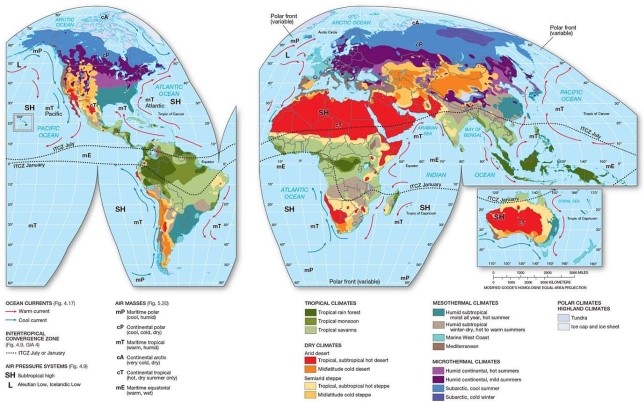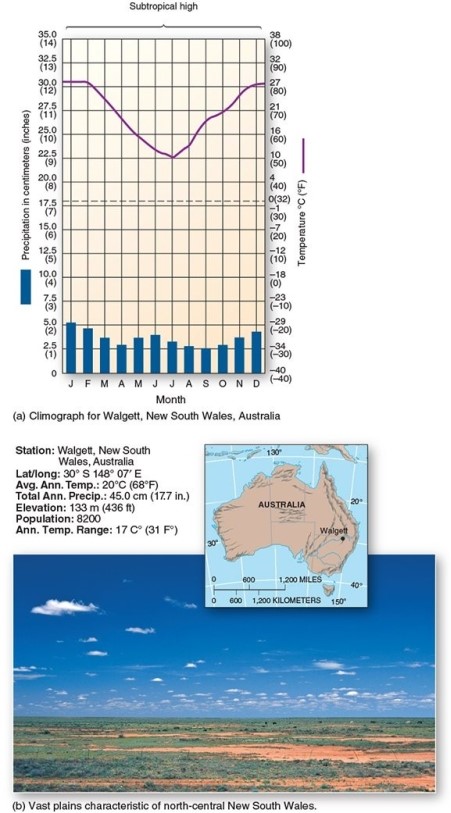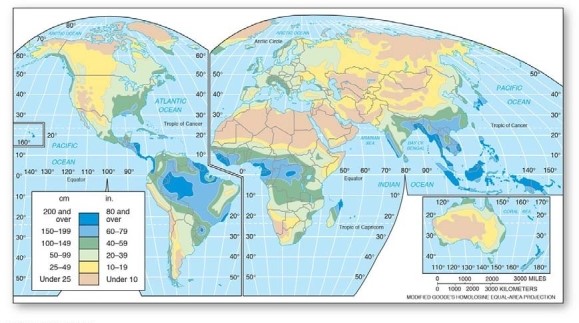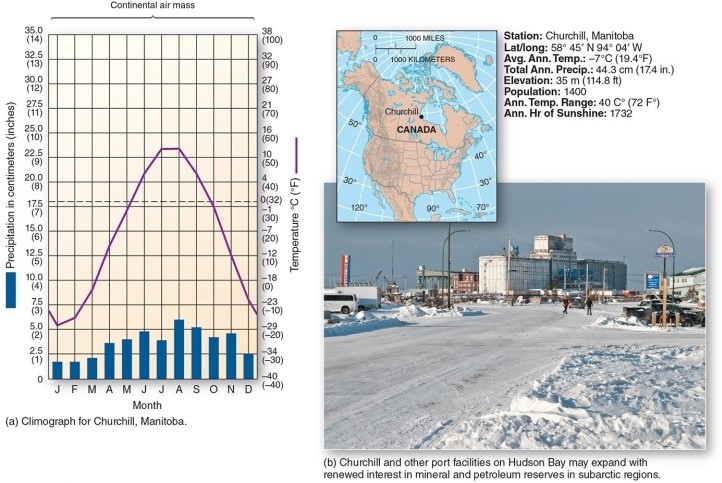Correct Answer

verified
Correct Answer
verified
Multiple Choice
The tropical savanna climate has
A) the ITCZ in summer and the subtropical high in winter.
B) the polar front all year-round.
C) the polar front in winter and the subtropical high in summer.
D) the ITCZ all year-round.
Correct Answer

verified
Correct Answer
verified
True/False
Climate is a statistical construction based on defining assumptions (i.e.,criteria)and is,therefore,not directly observable.
Correct Answer

verified
Correct Answer
verified
Multiple Choice
Which of the following lists the CORRECT,generalized sequence of climates from the equator to the poles?
A) Tropical → Mesothermal → Dry → Microthermal → Polar
B) Tropical → Dry → Mesothermal → Microthermal → Polar
C) Dry → Tropical → Mesothermal → Microthermal → Polar
D) Polar → Microthermal → Dry → Mesothermal → Tropical
E) Tropical → Dry → Mesothermal → Microthermal → Highland
Correct Answer

verified
Correct Answer
verified
Multiple Choice
 -Which air mass appears to predominately influence the humid subtropical region?
-Which air mass appears to predominately influence the humid subtropical region?
A) Maritime equatorial (mE)
B) Continental polar (cP)
C) Maritime polar (mP)
D) Continental tropical (cT)
E) Maritime tropical (mT)
Correct Answer

verified
Correct Answer
verified
Multiple Choice
Which of the following is NOT related to the 98th meridian in the United States?
A) It corresponds closely to the 51 cm (20 in.) isohyet of mean annual precipitation
B) The area bordering this meridian was originally dominated by native grasses growing in a deep-sod cover.
C) Corn,wheat,and soybean production occur in this area.
D) Tall grass prairies occur to the east of it,and short grass prairies to the west.
E) The land is drier to the east of the meridian and wetter to the west.
Correct Answer

verified
Correct Answer
verified
Multiple Choice
Areas dominated by maritime air masses will be relatively_______ ,and that those dominated by continental air masses will be relatively_______ .
A) dry; dry
B) dry; wet
C) wet; wet
D) wet; dry
Correct Answer

verified
Correct Answer
verified
Multiple Choice
 -This climograph is characteristic of which climate type?
-This climograph is characteristic of which climate type?
A) Subtropical hot steppe
B) Mediterranean
C) Marine west coast
D) Tropical savanna
Correct Answer

verified
Correct Answer
verified
Multiple Choice
Which of the following is NOT true of the subarctic climate regions of Canada and Asia?
A) This climatic zone experiences exceptionally large annual temperature ranges.
B) This climate zone constitutes the maximum poleward extent of forests.
C) The area can experience summer temperatures in the nineties.
D) Permafrost occurs here.
E) Broadleaf deciduous trees,such as maple and sweetgum,dominate the area.
Correct Answer

verified
Correct Answer
verified
Multiple Choice
World temperature patterns are primarily controlled by the following control EXCEPT
A) urban heat islands.
B) latitude.
C) continentality.
D) elevation.
Correct Answer

verified
Correct Answer
verified
Multiple Choice
 -An empirical classification is based on,among other factors
-An empirical classification is based on,among other factors
A) the origin or genesis of the climate.
B) the mean annual temperature and precipitation of an area.
C) causative factors.
D) the interaction of air masses.
Correct Answer

verified
Correct Answer
verified
Multiple Choice
 -A climate classification based on moisture using a water budget approach is an example of a(n)
-A climate classification based on moisture using a water budget approach is an example of a(n)
A) empirical classification.
B) genetic classification.
C) combined classification.
Correct Answer

verified
Correct Answer
verified
True/False
Subarctic climate with very cold winters are common in the Southern Hemisphere.
Correct Answer

verified
Correct Answer
verified
Multiple Choice
The two principle climate components are
A) pressure and wind speed.
B) precipitation and pressure.
C) temperature and pressure.
D) temperature and precipitation.
Correct Answer

verified
Correct Answer
verified
Multiple Choice
 -This climograph is characteristic of which climate type?
-This climograph is characteristic of which climate type?
A) Marine west coast
B) Subarctic cold-winter
C) Tropical rain forest
D) Humid subtropical winter-dry
Correct Answer

verified
Correct Answer
verified
Multiple Choice
Which of the following is INCORRECT regarding climate regions and climate change?
A) Subtropical high pressures systems and associated dry conditions are moving to higher latitudes.
B) The boundaries of climate regions are fairly static.
C) Many areas are becoming more prone to drought.
D) Tropical climates are expanding to higher latitudes.
Correct Answer

verified
Correct Answer
verified
Multiple Choice
 -A climate classification based on statistics or other data determined by measurements of observed effects is a(n)
-A climate classification based on statistics or other data determined by measurements of observed effects is a(n)
A) empirical classification.
B) genetic classification.
C) combined classification.
Correct Answer

verified
Correct Answer
verified
Multiple Choice
Which of the following is INCORRECT regarding ice-sheet climates?
A) There is very little precipitation.
B) The climate is dominated by dry,frigid airmasses.
C) The only month with an average temperature above freezing corresponds to the summer solstice (June in the Northern Hemisphere,December in the Southern Hemisphere) .
D) There are vast expanses that never warm above freezing.
Correct Answer

verified
Correct Answer
verified
True/False
The climate of an area can be classified in different ways depending on the criteria used to define it.
Correct Answer

verified
Correct Answer
verified
True/False
Taller trees in tundra climates may increase albedo.
Correct Answer

verified
Correct Answer
verified
Showing 41 - 60 of 143
Related Exams